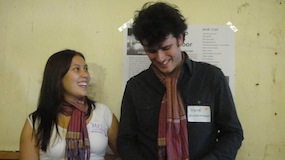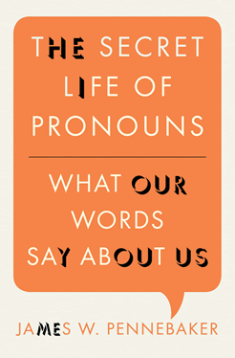Lovely article by Michelle Legro on brainpickings about Hedy Lamarr and Richard Rhodes's biography "Hedy's Folly". Not only was Hedy called the most beautiful woman in the world, but she created a spectrum spreading remote torpedo control system and several other patents. She was quite an inventor.
Wednesday, March 28, 2012
Trampoline Mind
Trampoline is a self-organising event for those who find the world interesting, have something to offer and share, and have an inquisitive mind.
Attendees are expected to come along with participation in mind and share what they find amazing to an audience that is up for cross disciplinary discussion.
The goal is to cover subjects that will be appealing across different disciplines. Technical or business-focused, environmental or social, new or old, complex or simple‚ as long as the ideas are interesting and you find them amazing, they’ll fit right in.Here's just a handful of topics that have been covered in previous events:
- Intergenerational Learning
- Wine Tasting
- The 1000-Year Old Human
- How to Juggle
- Similarities between Improvisational Comedy and Entrepreneurship
- 3D Printers
- Mass Collaboration, Free Information and the Semantic Web
- Complexity and Chaos
To stay up to date with future events, make sure you’re on the announcements mailing list.
The Format
The day at Trampoline is filled with sessions offered by attendees on the day - nothing is given priority, nothing is locked in before we start. Each session is 20 minutes long, and is focused on sharing something that the presenter finds amazing. Sometimes they can be talks, or group discussions, or tutorials. You can structure your session how you wish.There's no expectation that those speaking are experts (though a little knowledge usually helps). Participation is key.
At any given point, there will be four or five sessions happening - so you can either choose one discussion, or wander between a few - there's no expectation to stay put.
Getting Involved
Want to be a part of the conversations around Trampoline before and after the actual event? It mostly takes place, via Twitter and the Google Group.
The latter in particular is a great way to communicate with many Trampoline attendees - perhaps following up on topics that were discussed, sharing further ideas, or putting together ideas for the next event.
The Organisers
This event began as a conversation between Pat Allan and Bei Yin, and became reality through efforts by Pat, Melina Chan and Steve Hopkins. Since then, Aida Lee has joined the Melbourne team, and Steve and Caroline McLaren have taken it to Sydney. But we don’t control the content of Trampoline—that is always up to the people who come along!Need to get in touch? Just shoot */ Pat an email.
Wish I was there. :-) But I'm doing something similar with Robot LaunchPad and the Robot Startup Retreat and Mega Startup Weekend. But if Trampoline ever wants to come to US, I'm so in!
Monday, March 19, 2012
when i wasn't here
I was getting ready for the Robot Block Party @ Stanford by (amongst other things) updating the Silicon Valley Robotics website (SVRobotics.us). I was also getting the Robot Startup Retreat invitations ready on the Robot Launchpad (robotlaunch.com).
Plus posting to Robot State and keeping the Robot Times Weekly and the Robot State Weekly up to date.
What is human-robot metacommunication? | The Robot State

Chris Chesher, Unversity of Sydney, describes the conceptual challenges that robotics poses for media and communication studies. While this is still in press and subject to change, I found that this list is something I will want to refer to again! The transition from broadcast media to the internet and mobile media is complicated. Just as some theoretical models have emerged to understand computers, a ‘universal’ medium, the rise of robotics is going to create new layers of differentiation.
a. Robots are explicitly quasi-others, challenging traditional Humanist taboos against the agency and anthropomorphism of objects.
b. Robots have physical particularity, presence and autonomous activity, in contrast to other media such as printed, audio and screen-based media, which tend to be positioned as transparent and standardised and mass-produced media.
c. Robots use multimodal elements (movements, sound, screens, ‘emotion’) that aspire to create meanings that combine several media (facial expressions, movement relative to personal space, speech and so on).
d. Robots work with greater degrees of feedback than traditional computers. Robots perceive and interpret user actions, and modify their behavior within cybernetic loops.
I think that there may need also to be a separation between the metacommunication of robot as human proxy and the very specific and asymmetric human-robot and robot-human communication. Chris Chesher is one of the few theorists I’m aware of who attempts to deconstruct what a robot communication is.
[image of Waseda Talker 2007 - one of a series replicating human vocal production ]
Secret Life of Pronouns | The Robot State
“The Secret Life of Pronouns” by James W. Pennebaker is a book I wish I’d read before finishing my thesis. It makes a strong case for words having the power to reflect changes in our society and perhaps even be transformative. Sometimes highly relevant work is just too many disciplines away from your research area for it to register. (I felt the same way on discovering the work that Joanna J. Bryson was doing in the AI and philosophy areas on robot ethics and robots as slaves.)
Why was this relevant to me? My thesis was that analyzing the names we gave robots, particularly research robots in competitions rather than consumer products, illustrated the underlying social relations we have with robots and my conclusion was that we treat robots as slaves based on robot names having most similarity to 18th century slave names, rather than pet names, gadget names or personal names. My background is cultural theory, which analyzes objects and relations as texts and communications.
James W. Pennebaker is a social psychologist, the Regents Centennial Liberal Arts Professor and Chair of the Department of Psychology at the University of Texas at Austin, and highly cited author of 10 books and almost 300 scientific articles. The Secret Life of Pronouns describes a large long term research project that connects the way we use small functional words with the way we behave and are positioned in the world, our ‘social and psychological processes’.
“The smallest, most commonly used, most forgettable words serve as windows into our thoughts, emotions, and behaviors. The ways people use pronouns, articles, and other everyday words are linked to their personality, honesty, social skills, and intentions…. Using computerized text analyses on hundreds of thousands of letters, poems, books, blogs, Tweets, conversations, and other texts, it is possible to begin to read people’s hearts and minds in ways they can’t do themselves.”
The Secret Life of Pronouns is one of the new breed of big data scientific research projects. Using computation power and masses of data, the researchers are able to transform subtle social differences into significant correlations and robust data sets. We still argue over whether or not gender or class exist, or more precisely, we usually agree that they exist but risk being labelled polemical when we attempt to label something as gender or class related. So many other factors are more overt and specific to the group/people.
While there is always a trade off between large scale quantitative research and in depth qualitative work, it is very compelling to be able to say that something was studied over millions of people or thousands of cities. If a finding is true across all of these diverse groups then we may start to see the real nature of gender, class and other culturally constructed identities. We might be able to see if things change, in which ways and whether or not changes are beneficial, although that is still a highly subjective measure!
Some of Pennebaker’s findings include that women and men really do use language differently, and that most authors can be identified as male or female regardless of their characters’ genders. Even author authenticity has a good chance of being detected, whether Beatles songs or the Federalist papers. How couples or groups relate to each other shows in word use mirroring and can predict longevity of relationships and productivity of work teams. Ultimately, social cohesion is reflected in language styles, which like accents, can be highly localized and a subtle indicator of status and group belonging. People seem to be very good at utilizing these communicative techniques without thinking about it.
“The magic of this project is not about the links between income distributions and social patterns in cities. Rather, it shows how words in the most mundane of places can reveal important information about a community’s social ties. All groups, whether families, work groups, companies, or entire cities, leave trails of their social and psychological lives behind in the words their members use in communicating with each other. Words are one of the human-made elements that connect our thoughts and ideas across people. By tracking our words, we get a sense of the social fabric.” [p.243 'The Secret Life of Pronouns' by Pennebaker, J. W. Bloomsbury Press NY 2011]
Like this:
Be the first to like this post.
Wednesday, March 14, 2012
THE EATBEAT: Marilyn Hagerty, Grand Forks Herald
I stumbled upon this via her son's Google+ post. Of course having gone viral it would apparently be hard to miss but I'm 100% with the people who don't think it's quaint or ironic or twee. I think one kick ass no nonsense hard working woman is doing a straight up job and I appreciated her writing, her common sense and compassion. I'm glad 99% of the blogosphere/twitterverse what have you is happier to have honesty than hip.
Monday, March 12, 2012
‘Doonesbury’ creator Garry Trudeau on abortion law in Texas

Only once in the long history of “Doonesbury” has Garry Trudeau’s syndicate ever intensely objected to one of his story arcs. It was 1985, and the subject was abortion.
Starting Monday, amid heated debate about pre-termination ultrasound and sonogram bills in Virginia and Texas, Trudeau will tackle the politically sensitive issue of abortion head-on.
“To ignore it,” Trudeau told The Washington Post, “would have been comedy malpractice.”
PacX challenge | The Robot State
Fascinating experiment underway! In November 2011, Liquid Robotics launched four Wave Gliders – unmanned marine vehicles – in an attempt to autonomously travel the Pacific Ocean. On the way the Wave Gliders are sending a stream of openly available data on position, salinity, water temperature, waves, weather, fluorescence, and dissolved oxygen. And of course, the most interesting data. Is it possible to autonomously navigate the ocean.
Well, yes. The Gliders have just arrived at Hawaii, based on the March 7 post, including the one that lost communication. The only one in difficulty has lost rudder control but is nearby and communicating. I think a ride is heading its way.

Like this:
Be the first to like this post.





